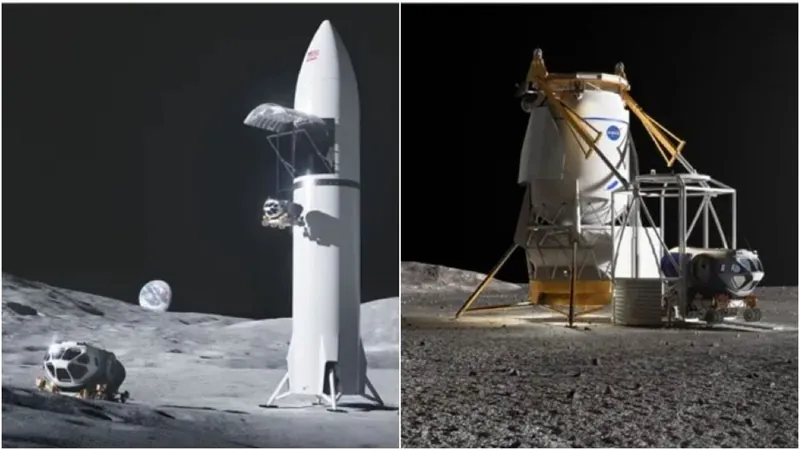
NASA Rockets Forward: SpaceX and Blue Origin Gear Up to Land on the Moon!
2024-11-21
Author: Ling
NASA Accelerates Artemis Program
NASA is accelerating its ambitious Artemis program, recently announcing key assignments for demonstration missions that will bring astronauts one step closer to the lunar surface. In a significant move, NASA has awarded contracts to both SpaceX and Blue Origin as part of its Human Landing System (HLS) initiative, with each company tasked with developing unique lunar landers for future missions.
Key Contracts Awarded
With these contracts, NASA is not merely planning for crewed missions; it’s also gearing up for substantial cargo transports to the Moon. Both SpaceX and Blue Origin are now expected to kick their designs into high gear in preparation for upcoming qualification missions that will test their lunar landers' capabilities. According to NASA, having two distinct lunar landing systems provides flexibility for various missions, ensuring a regular rhythm of lunar visits that foster continued exploration and scientific breakthroughs.
Developments for Future Missions
Following a 2023 directive from NASA, both firms have begun developing cargo versions of their lunar landers. The agency’s vision extends well into the next decade, with ambitious plans to establish a sustainable human presence on the Moon, which includes deploying critical technologies like moon rovers and astronaut habitats. Stephen D. Creech, from NASA’s Moon to Mars Program Office, emphasized this dual approach, asserting that it is crucial for both crew and cargo missions.
Distinct Roles for SpaceX and Blue Origin
Lisa Watson-Morgan, the Human Landing System program manager, revealed that SpaceX has been assigned the mission to deliver a pressurized rover, while Blue Origin will deliver a lunar habitat. Notably, the rover being developed in collaboration with the Japan Aerospace Exploration Agency (JAXA) aims to launch by 2032, in line with missions planned post-Artemis 6. Blue Origin's habitat delivery is targeted for 2033.
The Significance of the Artemis Program
NASA’s Artemis Program is set to make history by returning astronauts to the Moon for the first time since the Apollo missions of the 1970s, with plans to establish a long-term base near the lunar south pole—a region abundant in water ice. This resource could be critical for sustaining a lunar outpost and even producing rocket fuel, aiding future manned missions beyond Earth.
A Stepping Stone to Mars
As a stepping stone towards eventual Martian exploration, the Artemis missions hold great significance. The Artemis 1 mission, which launched an uncrewed Orion spacecraft into lunar orbit in November 2022, serves as a precursor to more ambitious efforts. The upcoming Artemis 2 mission will see four astronauts orbiting the Moon, albeit facing delays that have pushed its original launch window from late 2024 to late 2025.
Looking Ahead: Artemis 3
With Artemis 3—the mission designated to land astronauts back on the Moon—now scheduled for 2026, there’s palpable excitement and anticipation surrounding NASA’s lunar endeavors. Stay tuned as humanity prepares to return to the Moon, blazing a trail for the next giant leap toward Mars!


 Brasil (PT)
Brasil (PT)
 Canada (EN)
Canada (EN)
 Chile (ES)
Chile (ES)
 España (ES)
España (ES)
 France (FR)
France (FR)
 Hong Kong (EN)
Hong Kong (EN)
 Italia (IT)
Italia (IT)
 日本 (JA)
日本 (JA)
 Magyarország (HU)
Magyarország (HU)
 Norge (NO)
Norge (NO)
 Polska (PL)
Polska (PL)
 Schweiz (DE)
Schweiz (DE)
 Singapore (EN)
Singapore (EN)
 Sverige (SV)
Sverige (SV)
 Suomi (FI)
Suomi (FI)
 Türkiye (TR)
Türkiye (TR)